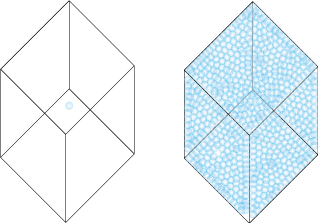
The Ideal Environment for Wine making
The natural conditions of constant cellar temperature and high humidity explains why underground caves, though inefficient and expensive, have been used to ferment and age wine for thousands of years.
The Energy Mass™ smart-building technology improves on this ancient, time tested solution by making space that is efficient and flexible, while stabilizing temperature and humidity with a precision exceeding even the conditions found in most caves.
So, Winemakers are free to focus on the many other variables in pursuit of their art.

Environmental Stewardship
Sustainable winegrowing practices protect the soil, air and water – elements that breathe life, and ultimately flavor, into the grapes and wines. Being good stewards of the land and good neighbors are principles many wineries and vineyards live by each and every day. Adopting environmentally and
socially responsible practices and making them an integral part of how business is done, ensures the health of the land, their communities and industry for generations to come.
Sensitive architecture and design, as well as building
strategies that make use of natural and recycled materials are a part of responsible practices.
The Energy Mass™ system employs a massive, super
insulated wall to reduce cooling energy consumption by 80%.
Additionally the wall, made from concrete, rebar and foam
insulation is 100% recycled or recyclable materials.

Peace of Mind
Earthquakes, wild fires and other disasters are an unfortunate fact of life and business. Investing in a building with superior fire resistance and strength could be the difference between recovery and ruin.
Imagine a building that won’t burn or be damaged in an earthquake, protecting your investment and allowing your business to continue without disruption.
The insurance payout from a natural disaster may compensate the immediate losses, but it doesn’t cover the brand recognition and shelf position for the three years it will take to build a new building, crush, age, and bottle the wine to go forward. Continued operation with minor losses is far preferred to total loss and rebuilding. It is wiser to invest in a safe, secure building and reap the rewards of lower insurance premiums, which can result in substantial savings over the life of the building.

Building Envelope Technology, Energy Mass™
The Energy Mass™ wall is essentially a site-built, engineered sandwich panel construction. It consists of a super insulated core, constructed with an insulated form, which is then filled with an expanding closed cell foam to achieve a vapor impermeable core of up to R-118 depending on core thickness. The unprecendented insulation is before any thermal mass benefits are considered.
This core becomes formwork for 3” thick concrete skins pnematically placed on both sides. One or both of the shotcrete “skins” has embedded radiant tubing turning the entire wall into a radiantly active surface. Smart-building technology harvests “free” night-cooling, and actively controls the pumps and the temperature of the walls. This rock steady control of temperature allows a constant high humidity to be maintained with out condensation, in turn keeping evaporative losses under 1%.
A winery using the Energy Mass™ envelope technology will save 80% of its cooling energy when compared to conventional winery construction.
Air & Water
“Cooling” is a deceptive concept. If a building doesn’t get hot, it doesn’t need to be “cooled.” The Energy Mass™ technology cools by continuously removing heat, without reducing the humidity. With its super insulated core little to no heat enters through the skin of the building.
Water is 832 times denser than air. A material’s density is directly related to its energy density. Water can channel far more energy per unit volume than air, vastly reducing the resources and cost required to move energy from one place to another.
Using – air – as a medium for energy transfer is thermodynamically and physiologically irrational.
Cooling air removes its moisture, “drying it out,” increasing evaporative loss.

